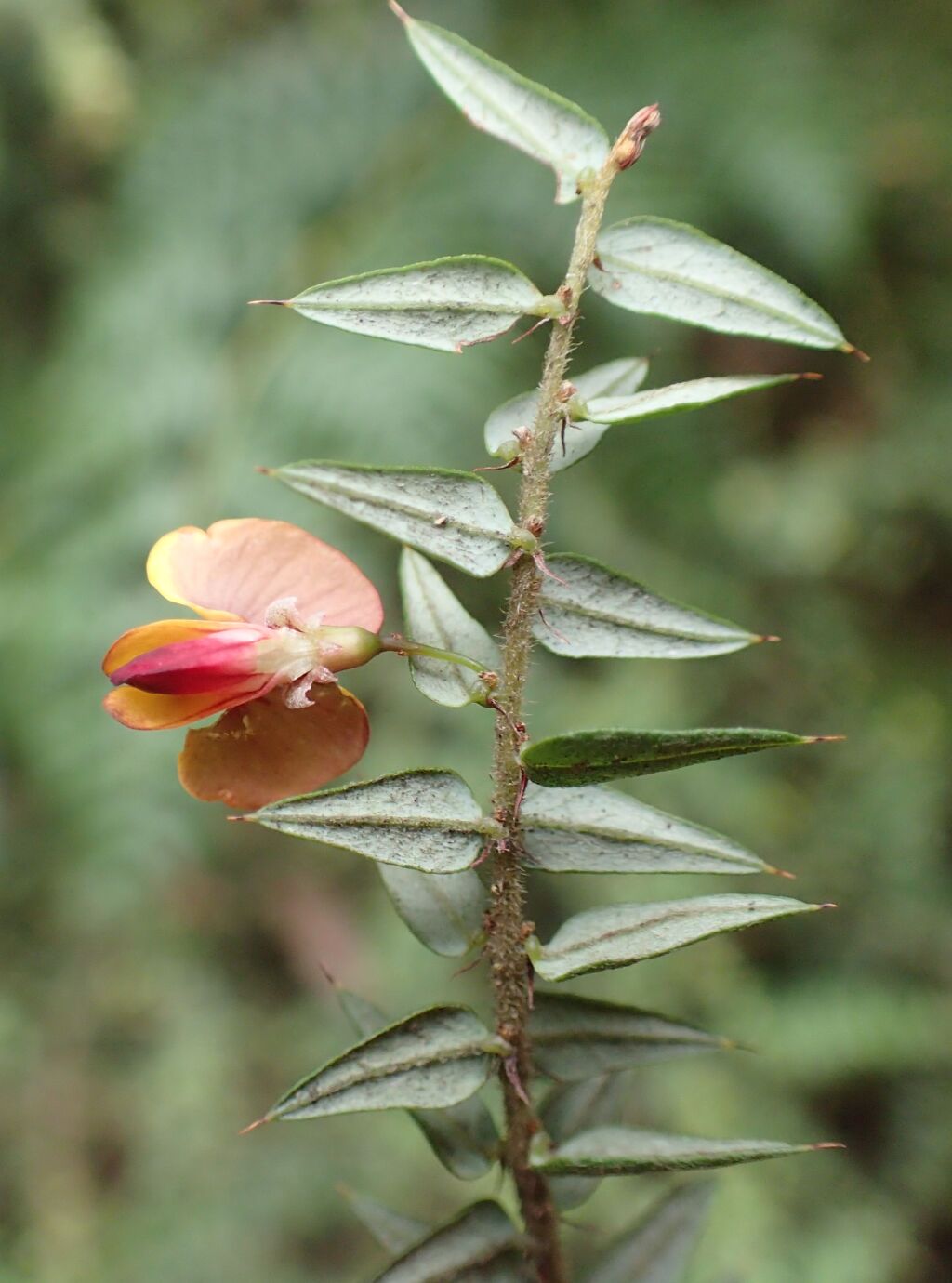Bossiaea cordifolia
SweetErect shrub to c. 3 m high; stems terete, usually with dense appressed or spreading hairs. Leaves alternate, opposite or whorled, unifoliolate, ± sessile; petiole lacking spur; lamina trullate or triangular, 5–23 mm long, 2–7 mm wide, rounded, cordate or truncate basally; apex pungent; upper surface dark green, glabrous, smooth or minutely tuberculate; lower surface usually glabrous except for scattered hairs on veins; stipules setaceous, to 3 mm long, recurved or deflexed, in closely adjacent pairs, persistent. Flower usually solitary, c. 10 mm long; pedicles to 15 mm long, usually glabrous; bracts c. 0.5 mm long, crowded; bracteoles c. 0.5 mm long, usually inserted above middle of pedicle, persistent; calyx 3–4 mm long, tube longer than lobes, upper lobes much broader than lower, glabrous; standard mainly red externally and golden-yellow internally; wings yellow; ovary stipitate, glabrous, 3–4-ovulate. Pod ovate to oblong, 1.5–2 cm long; stipe usually exceeding the calyx. Flowers Oct.–Dec.
OtP, GGr, OtR. Restricted to the Otway Ranges, growing in open Messmate or stringy bark forest, or heathland.
Closely resembles B. cinerea, but distinguished by the distinctly deflexed stipules that are inserted somewhat adjacent to one another rather sitting on opposite sides of the petiole. Also, the leaves tend to have a lower length to width ratio (less than 2, cf. 3–8 in B. cinerea) and are more prominently pungent-tipped, the petiole lacks a spur, and the wing petals are yellow.
 Spinning
Spinning
